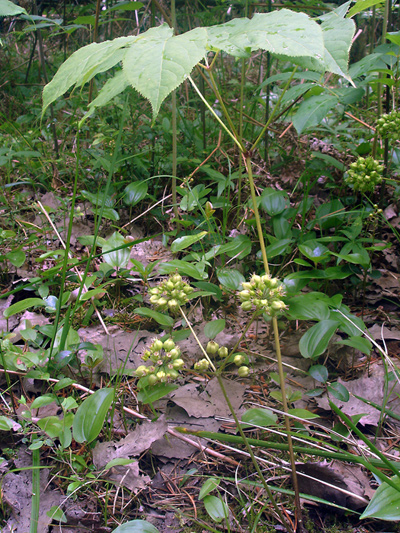
Distribution and localisation map
Wild sarsaparilla
Aralia nudicaulis
Aralie chassepareille
- Identification
- Presentation
- Identification
- Names
- Uses
- Ethnobotany
Very common in our forests and woods, is easily distinguished by its leaves and flowers on a different rod, one with three "spheres" of flowers and one with three "clusters" of leaves with 3 to 7 leaflets, usually 5.
Territory:
At least until the Taiga.Habitat:
Forests and woods.Flowering:
In bloom in late June, with fruit in August.Similar:
The Bristly sarsaparilla (Aralia hispida), higher and wider is mainly distinguished by its hairy stems.When the leaflets of Wild sarsaparilla are three in number, the plant can look like poison ivy (Toxicodendron radicans), but the leaflets of Wild sarsaparilla are finely toothed unlike those of poison ivy.












